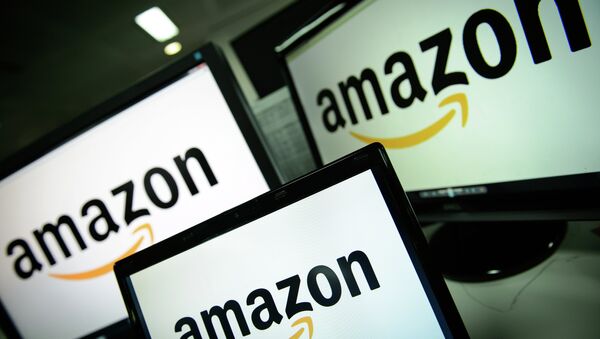Kristian Rouz – Internet retailer Amazon has officially owned the grocery chain store “Whole Foods” for only one day, and it wasted no time cutting prices by roughly 50 percent in an aggressive attempt to win a greater share of the market. The move exposed the rigged pricing policies of many US grocery stores, resulting in a sharp decline in grocery bonds across the US.
Amazon revealed that Americans are paying more for food than it actually costs. The online giant purchased one of the nation’s most renowned organic foods retailers for $13.7 billion. The brick-and-mortar operation of the Whole Foods Market was struggling to attract new customers, as the chain store had even earned itself a nickname, Whole Paycheck, for its notorious pricing practices.
![]() Amazon’s new policy has shaken the $800 billion supermarket industry to the core, as such a dramatic decrease in prices on foods labeled as “organic” undermines the entire point of the “organic food” market – selling it at a higher price with a “good for health” premium included. Besides, by bringing the prices down, and in line with those of such chain stores as Wal-Mart and Costco Wholesale, Amazon is exacerbating the already stiff competition between supermarkets.
Amazon’s new policy has shaken the $800 billion supermarket industry to the core, as such a dramatic decrease in prices on foods labeled as “organic” undermines the entire point of the “organic food” market – selling it at a higher price with a “good for health” premium included. Besides, by bringing the prices down, and in line with those of such chain stores as Wal-Mart and Costco Wholesale, Amazon is exacerbating the already stiff competition between supermarkets.
“Price was the largest barrier to Whole Foods’ customers,” Mark Baum of the Food Marketing Institute said. “Amazon has demonstrated that it is willing to invest to dominate the categories that it decides to compete in. Food retailers of all sizes need to look really hard at their pricing strategies, and maybe find some funding sources to build a war chest.”
The new Whole Foods prices are effective Monday, and such categories as fruit, fish, chicken, and dairy were subject to price cuts, while the selection of items available remains the same. The initial decrease in prices saw the items marked with an orange “Whole Foods + Amazon” sign, however, Amazon plans to keep cutting the prices further (“More to Come”) where it is possible as long as they can remain in the black.
Consumers welcomed the move, naturally, but the most important development is that the traditionally “cheaper” supermarkets, such as Target, find themselves competing with the premium-segment Whole Foods, meaning in order to stay afloat they will have to cut their own prices as well. Such developments might hamper US inflation and the volumes of money that consumers spend at supermarkets.
![]() Meanwhile, Wal-Mart and Costco have tried to step up their game in the past twelve months by offering “organic” products at a 30 percent lower price than the old Whole Foods pricing. Amazon buried that strategy of its competitors in one day.
Meanwhile, Wal-Mart and Costco have tried to step up their game in the past twelve months by offering “organic” products at a 30 percent lower price than the old Whole Foods pricing. Amazon buried that strategy of its competitors in one day.
Out of more than 40,000 grocery shops in the US, only some 400 are owned by Whole Foods/Amazon, however, the Whole Foods brand reputation affects the market psychologically to a far greater extent than the impact could have been based exclusively on the sales and pricing mechanisms.
The plunge in supermarket bonds, entailing the Whole Foods price cut, creates another hazard for the US groceries. Brick-and-mortar operations are known to have struggled with the rise of e-commerce in the past two-three years, and even such giants as Wal-Mart had to resort to shop closures in many cities to cut operational costs. Now, with bond prices down, it will be harder for the food retailers to attract capital and secure financing for their projects.
Many shops might close, especially in the wake of international food retailers boosting their e-commerce operation in the US. The Dutch-based Stop & Shop and the German Aldi Stores say that not only will they cut prices, but will offer home delivery in a bid to win a sizeable share of the US market.
“Goodbye, Whole Foods as we know it,” Karen Short of Barclays Capital in New York, said. “The conventional supermarket has not evolved much in decades. But Amazon will likely drive drastically different shopping behavior in the grocery. The survival of the fittest has begun.”
Supermarket stocks also dipped on Monday, extending their yearly declines.
While many observers hope that the consumer will ultimately win due to the lower food prices, the bigger picture is more complex. Lower revenues and tougher competition might trigger shop closures, jeopardizing the convenience of grocery shopping. The remaining groceries, meanwhile, could subsequently hike up prices, enjoying their “only grocery in town” status.

